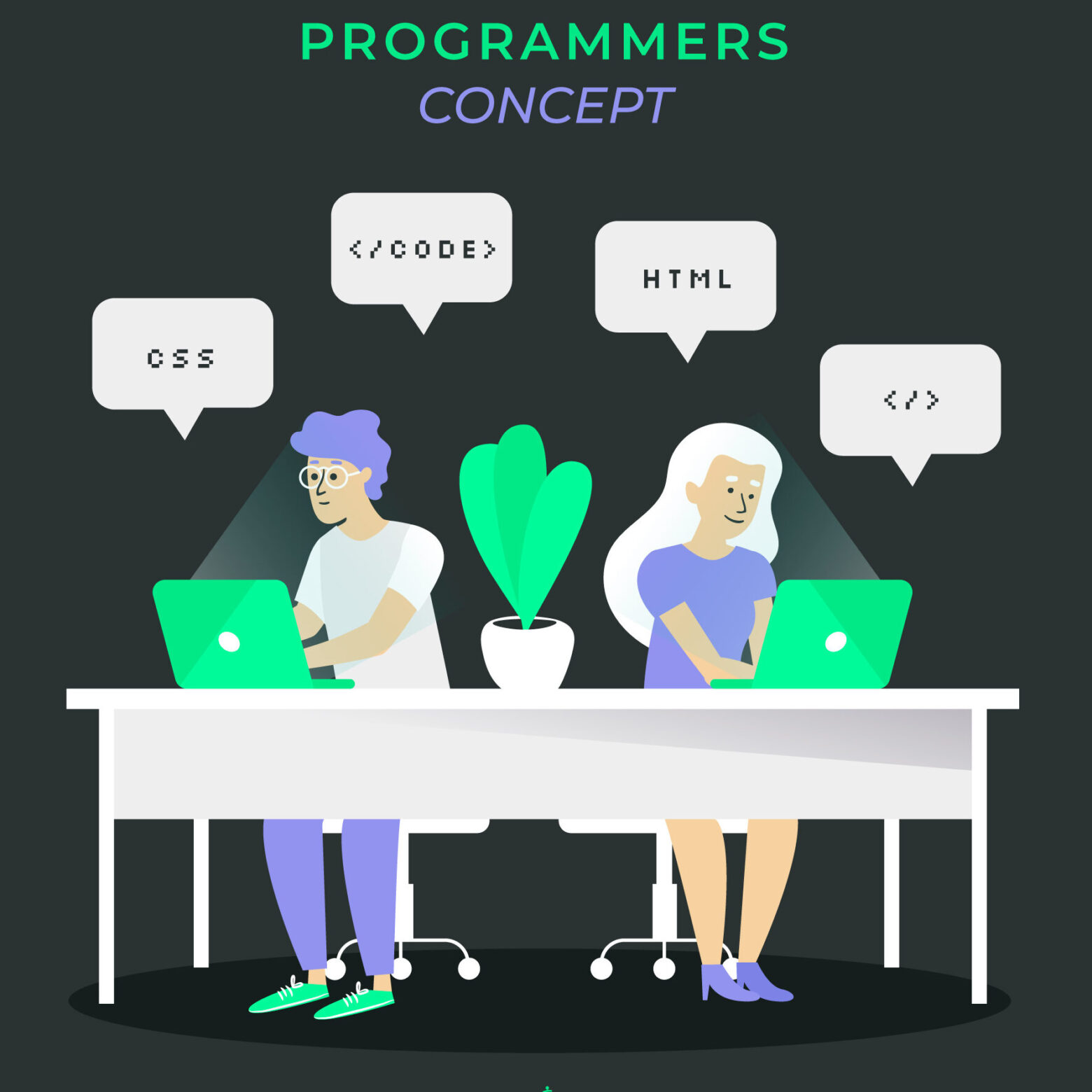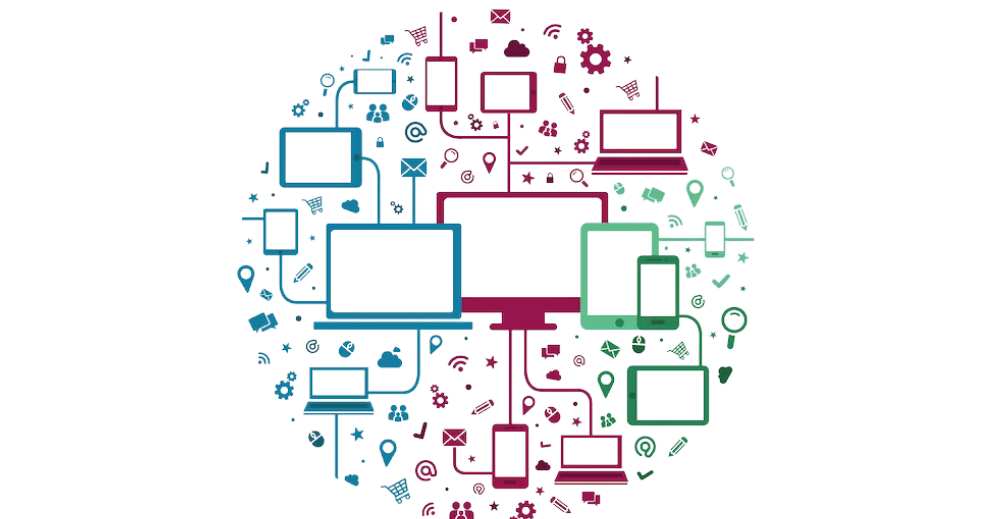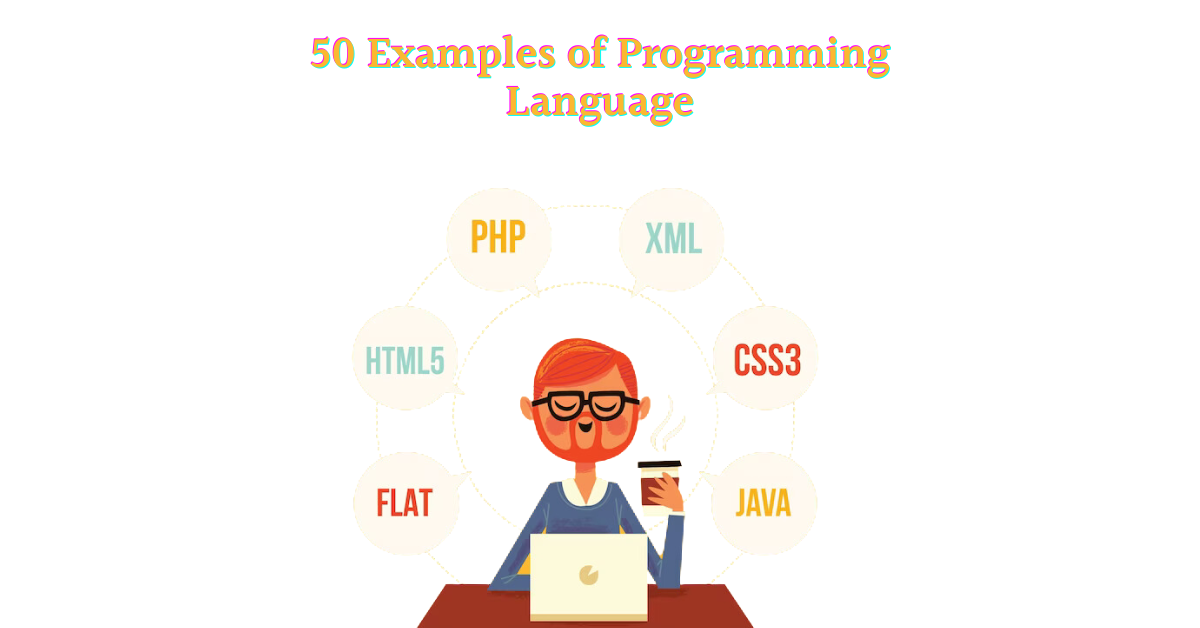Programming languages are the foundation of software development, allowing developers to communicate with computers and create a wide range of applications. Over the years, numerous programming languages have been developed, each serving specific purposes and catering to different needs.

Examples and Uses of Programming Language
In this article, we present 50 examples of programming languages, showcasing their diversity and significance in the world of coding.
| No. | Programming Language | Year of First Release | Primary Use Cases |
|---|---|---|---|
| 1 | C | 1972 | Systems programming |
| 2 | Java | 1995 | Web, Android, enterprise |
| 3 | Python | 1991 | Web, data analysis, AI |
| 4 | JavaScript | 1995 | Web development |
| 5 | C++ | 1985 | Game development, systems |
| 6 | C# | 2000 | Windows application |
| 7 | Swift | 2014 | iOS, macOS development |
| 8 | Go | 2009 | Cloud services, networking |
| 9 | Ruby | 1995 | Web development |
| 10 | PHP | 1995 | Web development |
| 11 | TypeScript | 2012 | Web development |
| 12 | Rust | 2010 | Systems programming |
| 13 | Kotlin | 2011 | Android development |
| 14 | MATLAB | 1984 | Numerical computing |
| 15 | R | 1993 | Data analysis, statistics |
| 16 | Perl | 1987 | Text processing |
| 17 | Objective-C | 1984 | iOS, macOS development |
| 18 | Scala | 2003 | Web development |
| 19 | Haskell | 1990 | Functional programming |
| 20 | Shell Scripting | 1971 | Script automation |
| 21 | SQL | 1974 | Database querying |
| 22 | Assembly | 1949 | Low-level programming |
| 23 | Dart | 2011 | Cross-platform apps |
| 24 | Groovy | 2003 | Scripting, automation |
| 25 | COBOL | 1959 | Business applications |
| 26 | Fortran | 1957 | Scientific computing |
| 27 | Lisp | 1958 | AI, symbolic computing |
| 28 | Prolog | 1972 | AI, expert systems |
| 29 | Ada | 1980 | Safety-critical systems |
| 30 | Bash | 1989 | Shell scripting |
| 31 | Tcl | 1988 | Scripting, networking |
| 32 | Julia | 2012 | Scientific computing |
| 33 | COOL | 1990 | Compiler construction |
| 34 | PL/SQL | 1992 | Oracle database |
| 35 | VHDL | 1985 | Hardware description |
| 36 | Verilog | 1984 | Hardware description |
| 37 | Dartmouth BASIC | 1964 | Beginner education |
| 38 | Smalltalk | 1972 | Object-oriented design |
| 39 | Ada Lovelace | 1979 | Education, learning |
| 40 | Scratch | 2002 | Educational programming |
| 41 | Alice | 1994 | Educational programming |
| 42 | Logo | 1967 | Educational programming |
| 43 | Scheme | 1975 | Functional programming |
| 44 | D | 2007 | Systems programming |
| 45 | COQ | 1989 | Formal verification |
| 46 | Eiffel | 1986 | Software engineering |
| 47 | F# | 2005 | Functional programming |
| 48 | Tcl/Tk | 1988 | GUI development |
| 49 | ABAP | 1983 | SAP system development |
| 50 | RPG | 1959 | Business applications |

This list provides only a glimpse of the vast landscape of programming languages. Each of these languages has its strengths and weaknesses, and developers often choose a language based on the specific requirements of their projects. Whether you’re building a web application, a mobile app, or a complex system, the programming language you choose plays a crucial role in the success of your endeavor. As technology continues to evolve, new languages will emerge, further enriching the world of software development.
Remember, learning multiple programming languages can be beneficial, as it broadens your understanding of different paradigms and approaches. So, explore, experiment, and find the languages that resonate with your coding style and project needs. Happy coding!

